Korneflodes of beets are replete with nutrients, due to which they possess therapeutic properties and are referred to in the People's Molve "Health Cubes". Without this, the vegetable does not prepare such appetizing dishes as the "Sellide under a fur coat", the Salad "Bride", a salad with garlic and smoked cheese, vinaigrette, borsch. The dishes will be elegant and delicious if the rootes will have excellent taste. Let's talk about the varieties and peculiarities of the cultivation of beets.
Characteristic beet
It belongs to this herbaceous plant, forming under the ground root, to the amaranth family. Now it is grown everywhere, with the exception of Antarctica. All cultivated species were obtained from wild beet, which grown in the Far East, as well as in India. At first, the beet leaves were walked only, and the underground part was used to treat diseases. Much later (about the fourth century BC) began to spread both the rootless forms of this plant. Ukrainians and Belarusians call this culture by Burak.
While underground, rooteplood accumulates salts of magnesium, potassium, phosphorus, calcium, sulfur, sodium, iron, iodine, molybdenum, silicon, zinc, cobalt, vanadium, titanium, lithium ... The beets are found: betaine, 14 amino acids, pectin substances, Important vitamins, fiber, sugar, apple, wine, lemon and other organic acids, anthocyans. Regular use of beets Warns constipation, the development of hypertension, atherosclerosis, oncological diseases, anemia, improves the processes of digestion, blood formation, skin condition, cleanses the gallbladder, liver, kidney, intestines, lymphatic system, contributes to improving immunity.
The shape of roots can be an elongated conical, rounded, oval-cylindrical, flat. The specialists found out that the conical root roots of nitrates accumulate much less than rounded. Color at the pulp Dark red, burgundy purple or white. Now in the catalogs of seeds you can already meet varieties with yellow and orange internal content. If the root of more than 500 grams weighs, then a loss of quality is possible as a result of the growth of the so-called vascular fibrous rings with a coarsest consistency. To grow in bed with beets, you first need to purchase it, called the gloms. They consist of several seeds that have grown together. The shape of such gloms looks like a ball or a polyhedron. The size of the nozzle is up to seven millimeters, and the color is grayish-brown or bronze. If the nollion is not allowed, then their painting is greenish-bronze. Spelling retain their sowing qualities for three or even four years if they are correctly stored.
What happens beet?
The most famous types of beets:
- Dining room - it is its root roots are grown for the preparation of various dishes. Such beets are juicy flesh, without residence and villion, bright color and tasty, sweetish.
Early harvests yield varieties, "Ruby Queen," "The Red Balloon", "Early miracle," "The Egyptian flat," "Vinegretnaya Marmeladka", "Pushkinskaya flat", "Libero", "Incomparable A463."
In the circle truckers most widely middle-grade ( "Pablo", "Detroit", "Mulatka", "black woman", "Bohemia," "Bona", "Smuglyanka", "Nosovskaya flat", "Lark," "Valenta") , the length of the growing season in which from 80 to 100 days. At polyspermous grades (a "Bordeaux 237", "Prygazhunya", "cold resistance 19", "Kamuolyay 2") stems from one shown by two to four rostochku. But pip (for example, "Ros", "Odnorostkovaya," "Mona," "Skvirsky gift") even thin out the seedlings do not need.
If you want to root crops have not been rounded and cylindrical, then choose the following varieties of beets, "Cylinder", "Formonov", "Renova", "Rocket F1."
Pozdnosozrevayuschie varieties: "Mona", "Renova", "Torpedo", "Ataman".
List of varieties of beets, which respond well to gardeners:
- "Bordeaux 237" - launched back in 1943 by domestic breeders, but does not lose popularity. Loves the heat, plenty of sun, drought-resistant, rarely suffer from diseases. Form of root vegetables rounded or flat-round. The flesh is tender, tasty, sweet, rich burgundy. Long stored in a cellar or glassed loggia.
- "Bravo" - a high yielding variety, giving a small, smooth, rounded shape roots. Their flesh is juicy, light burgundy, koltsevatost absent. Other advantages grades: excellent germination, resistance to cercosporosis on it less "hosted" beet flea beetles.
- "Valenta" - another high yielding variety, normally tolerate periods of cold weather. Root vegetables are colored dark red, juicy, mild noticeable in the section of the ring, the taste of dessert. Another plus - good lozhkost winter.
- "Mulatto" - a variety of recently launched, but has already found its fans. Inside smooth, rounded root crops of red pulp, with no rings on the cut, juicy and tender. I like the hostess, because I did not lose a beautiful color when cooked. The taste of her wonderful. Yes, and it kept perfectly.
- "Pablo" - another recent variety, all the fruit of which is approximately equal size, the skin is thin, "tail" small. Inside color of bright red, koltsevatosti not. Suitable for cultivation in colder regions, hardy and undemanding, resistant to frost and tsvetushnosti. Valued for its abundant harvests, good safety during the winter months.
- "Inconsistent A463" - the name speaks for itself. The shape of the root plane is flat, outside the color is dark burgundy, inside the juicy, dark-alay, there are dark rings. Shows stability to churrosposition, the effort is good.
- "Detroit" is a famous variety that shapes rounded small root roots with a short "tail." The color is bright red, the ringingness in the pulp is not, her taste is wonderful. Important advantages: color resistance and innate immunity to various diseases, stable yields, long safety in winter.
- "Rocket F1" is a hybrid variety, forms cylindrical, elongated smooth root roots. Inside the pulp is painted in purple color, the rings no, the taste of the ransom. Other advantages: High yield and storage duration.
- "Cylinder" - also forms cylindrical attractive roots, having a dark red color. There are no white rings in meakty. Length from 10 to 16 centimeters. Such a long beet was very tasty in vigrets, borscht, salads and conservation. Vintage gives good, it is rarely sick, it is easily twisted, the whole winter is stored perfectly.
- Sugar - mainly designed for the production of sugar. There are farmers using her livestock. Popular varieties: "Crystal", "Accord", "Big Ben", "Arakvia", "Vanessa", "Triad", "Mandarin", "Ventura", "Edison", "Typhoon", "Spartak", " Federica.
- Sheet (second name - mangold) - There are a lot of vitamins, microelements in its leaves and cutters. Most common in Europe. Here are just a few well-known varieties: "Lukul", "Lyon", "Winter Keeper", "Krasnochercher", "Dark-green", "Rubin", "Emerald", "Beauty", "Scarlet", "Bride".
- Feed - rooted root in color (pale pink, reddish, white, yellow) and larger. They go to the fodder of the animals. Here are some varieties giving good yields: "Poly Record", "Brigadier", "Firstborn", "Marshal", "Titan", "Timiryazevskaya single-family", "Eckendorf Yellow", "Milan", "Lada".
Soy preparation for beets
The best soils for beet are sandy and loam rich in organic compounds. Soils are not suitable for this culture with increased acidity, as well as places, poorly heated by the rays of the Sun and with moisture stagnation. Loving must be carried out in advance. If the site you prepare in the fall, then use the ash or dolomite flour. In the fall, you do not make a long time, otherwise it will negatively affect the quality of the root, their efforts will deteriorate, susceptibility to certain diseases can increase. The optimal option, to make a manure under the predecessors of this culture (for example, under onion, pumpkin, potatoes, or cabbage), and the next season is placed on this bed with beets. Phosphoric and potash fertilizers are made on the garden in the fall at its peroxide. In the spring, the garden must be fed by nitrogen fertilizers, and microelements. You can use the Complex called "Kemira-Universal". The structure of heavy soils would be nice to improve the sand with river, straw, humus, peat. In the sandstones, make a blind land and humus. Cut the bed for beets is high, after which you make a groove (across or along), depth to three centimeters.
Beets are well neighboring garlic, lettuce, onions, bean, collar, celery, cauliflower.
It is impossible to suck the beet on the same ridge for a year after year, otherwise the wires, other pests, pathogens, and the yield of beets will suffer in this place, and the yield of beets will suffer.
When to start landing beet?
Usually, gardeners are engaged in beet after the carrots are sown. Upper soil layers must warm up to this time to a plus of eight degrees. If in the cold open soil the beet seeds will lay for a long time, then such an unfavorable factor can cause plant boosters. It is necessary to catch good weather from May 1 to 15. If you hurry, and send beet seeds to the ground in the second half of April, then the likelihood is that small shoots will die, hitting frost.
If you have the ability and desire can grow sprouts beet planting seedlings in the pre-seed boxes with a substrate. In this case, seeding is carried out in the middle of the second spring month. When seedlings will be two sheets, it is necessary to thin them. Usually take small scissors for this purpose and excess (more thin), the plants are cut. Pull out can not be otherwise damage the roots left rostochku. The box should stand on a light windowsill. Make sure that the substrate is slightly damp. Planted on a prepared bed of plants having already four well-developed leaf. This is generally in the second half of May. Do not place these plants deep water them after transplantation.
There are varieties that are suitable for autumn planting (in October). For example, the "Egyptian flat", "Detroit", "Bohemia", "cold resistance 19 '.
Do I need to prepare the seeds of beets?
The raw stems sprout disjointed and long (up to 14 days). Therefore, experienced gardeners for 2-3 days stems soaked. I forgot to do this, and already want to start planting? Then take a hot solution of potassium permanganate, and for a while, send him glomeruli. There are gardeners who first 60 seconds of thick throw the seeds in very hot water, and then immediately proceed to the planting. You want to increase beet resistant to all kinds of diseases, it is necessary to hold the stems in such a composition: 500 milliliters of water, take half a teaspoon of baking soda and stir it. Before you send seeds in the furrow, to spill their hot solution of potassium permanganate. Once it is absorbed into the ground, start unfolding aggregate fruits. Please note that the varieties that give a lot of shoots need distance between seeds of eight centimeters, and odnorostkovye - five centimeters. Leave between rows of 20 cm.
Further cultivation of beet, care for her
If it so happened that a lot of aggregate fruits went rostochku then gelled to prevent landings do some thinning:
- first - when seedlings otrastot has a pair of true leaves;
- second - when the fifth well formed sheet;
- the third - until mid-August to end up with the distance between plants was ten centimeters.
Beetroot needs proper watering regime, loosening, which is combined with the removal of weeds. The cleaner will bed, the smaller pests bother beets.
Another important element of agricultural technology - a dressing beet.
Observations of specialists show that in nitrogen this culture needs more than carrot roots, salad leaves and juicy cucumbers. Phosphoric fertilizers need more than representatives of the family of cabbage and tomatoes. And the potash coils are required more by quantity than tomato, carrots or cucumbers.
If there is little such element in the soil as a manganese, then you will see that some leaflets on plants will rage and soon dry off. With potassium deficiency, rootes are sharpened, their development is worse. The fact that in the soil is little boron, the hindrance of the root plants is evidenced, the "heart" is evaporated. They noticed the softening "Heart", immediately spray their plants with microfertres, where the boron is present in the composition. For example, "Uniflor-micro" will suit. You can use boric acid, prepare a solution, the concentration of which will be 0.02%.
If the leaves blush, then this is a sign that beet needs sodium. Water such plants with water in which stir the tablespoon (with a flood) of the usual salt. Then generously sprinkle the ground around the ash powder.
Want to do without "chemistry"? Then make the first feeder after the little plants go through, using the "green" fertilizer for it. For him will need weighing plants and a barrel with water. Weeds grind and pour into a barrel with water, let them bother there for a week. And here in a liter such an unpleasant smelling fluid add to a bucket for watering and mix with water. For the second feeding, a divorced korovyan is suitable (one part for ten parts of water), and the right time for it is at the time of closure of the tops between the rows.
In August, scatter ashes under plants and satisfy the soil (a tablespoon of salt goes per square meter).
Mineral complexes that are suitable for feeding beets - "Raslin", "Agrikola-4", "Kemira-Universal".
On acidic soils, with a stagnant humidity and with a deficiency of boron, fungal diseases (peronosporosis, churrosposition, pomoz, fusariomic rot) are trailed. And if they suddenly noticed on the plants white (grayish or lilac) raids, specks, black dots, traces of rot, then make them processing burgundy liquid, fungicides. Do not forget that in two weeks it is necessary to make re-processing. Those parts that are damaged, you must immediately delete.
Pests that can spoil beets:
- Beet (bean) Whew - small black or dark green insects that are rapidly multiplied and give 15 generations for the summer. Top of the amazed solar plant is twisted, rooted roots are fine. Only an actor and insecticide biopreparation can help in combating these colonies of TI (for example, the "spark bio"), as well as entomophages (for example, a semitamine cow). You can still try to sprinkle with the beetroot as an ash powder, spray the landing with an infusion cooked from the onion husk, or a soap solution in which tobacco dust has been added. The odorous plants planted nearby (calendula, velvets) will scare away.
- Root TLL - small insects whose painting is whites-yellow, parasitic in root underground. The plant is deprived of the nutrients necessary to him, the tops fade and dry out. On one bed, the trouble quickly spreads through other roots. It is necessary to detect the foci of this tli in a timely manner and process them with insecticidal agents.
- Beetcloth flea (ordinary or southern) are tiny jumping bugs whose color is dark green. First, they live on weeds, and then jump over the beets on the tops and spoil her, which leads to the death of this culture. Plants let down tobacco dust or use "actor" (this is a biological product). Insecticide, destroying fleaings, is "phosphamide".
- Beet glasses are the length of these beetles from 12 to 16 millimeters, and the painting is grayish-buoy. They know how to dry the little beet shoots. When the plants are untouched by them grow up, then the females of the weevils are postponing near the egg soil. When the larvae will appear on them, they will eat with the rooting roots. Top wilts, yield falls. Decis can cope with weevils.
- Beetroot beetles are small (up to two millimeters) insects, the color of which is dark green, with obvious pearlescent vigorous. They feed on young leaflets and spoil the Heart (Growth Point). The fight against beetles and their larvae is carried out using "Inta-Vira" and coarse powders.
- Beet bugs are real incines feed on with leaves, as a result of such acts, leafy plates become bubble. These bugs develop on weeds, so they are very important to eliminate them. Sevings can be treated with phosphamide.
- Beet fly - develop on the inner surface of the leaves. There can be seen transparent larvae of flies, similar to the caterpillars. Pests collected and destroyed, and the plants treated with insecticide (e.g., "spark", "malathion"). Make sure to remove weeds from the garden, because it is they first fly lives on the beets she moved later.
- Undermines the mole - the brown butterflies at all rather offensive. They carry out laying eggs on the leaves of beet cuttings. Hatched caterpillars crawl deep into the developing root crops, making tunnels there. After the crop is harvested, it is necessary to burn all the tops and make a soil insecticide treatment ( "Malathion"). Crops can be processed "thiophos".
- Matt carrion and their larvae - adults dark, up to 10 millimeters in length, and their larvae - shiny, destroying young rostochku, while large plants devour green mass to the very veins. Eliminate their "Bazudinom", "aktellik".
- Mole crickets and larvae - gnaw roots of young plants developing. Different ways of dealing gardeners use to rid their land of medvedok, including insecticides group pyrethroids, neonicotinoids.
- Nematodes - is worms, which also eat around the root system, resulting in the plants begin to lag behind in development and will soon die. Most of the pests manage to destroy this way. In September, we must sow mustard (or alfalfa) on the site. Nematodes are moving on the green manure. Grown plants need to mow, and then subjected to deep plowing the land.
How to pour the beets?
The main root of this culture can take in the deeper soil layers. Roots draw moisture very well, but the leaf plate rather intensively consume it. Therefore, beet water need more than carrots. In the first half of the growing season rapidly growing crops need a good abundant watering because at that time a lot of effort is spent on the formation of leaves. The second part of the growing volume of water should be reduced. Usually three weeks before the planned harvest watering beets and completely stopped.
When to harvest the beets from the garden?
If you plant the early varieties, the one, two svekolki can pull out in mid-July, using them for cooking various dishes.
The harvest of roots from the middle-easier and late varieties is proceeding earlier than bringing carrots from the "dwarfs". It is necessary to have time before the autumn frosts come, because they can damage the root of the root of the root, which is above the surface of the soil. If freezes are touched by beet, the safety of the root plans will deteriorate during winter storage. So, in a dry day, all roots are consistently twisted from the soil, shake and decompound to dry. Then they start trimming the tops, while leaving near the tip on the centimeter of the cuffs, do not cut the root. Preferably, the beet roots lay in the boxes, speaking sand. Now they must be transferred to the cellar. Experience shows that those roots are preserved longer and better preserves.
Now you know what varieties of this culture to ask in horticultural stores, how to prepare for the landing of the nozzle, how to care for plants, and when collecting the crop beet. We hope that this information will allow you to get a good harvest and fill it with a cellar.


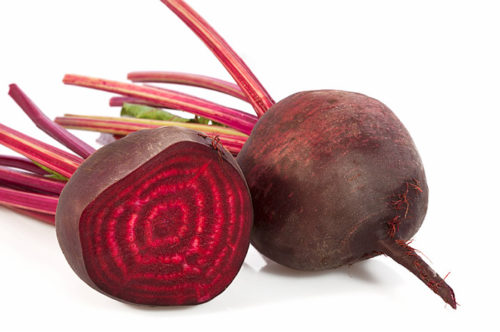

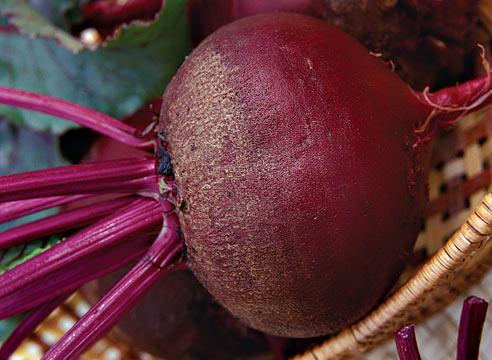


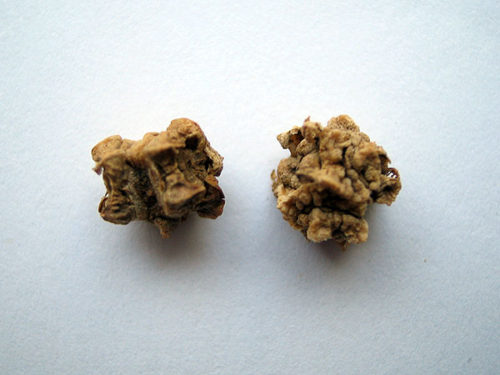
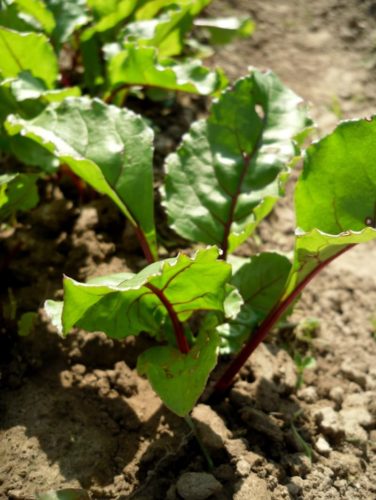

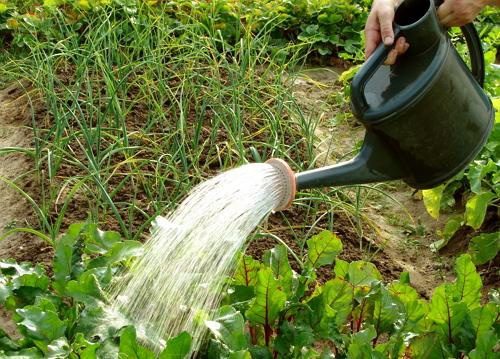
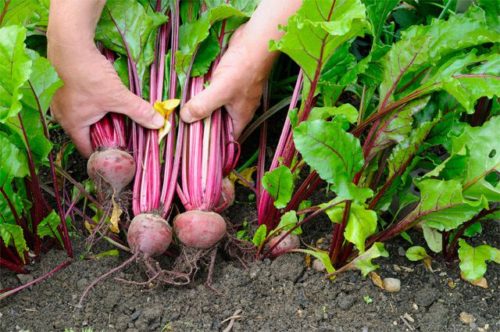












 Start a discussion ...
Start a discussion ...